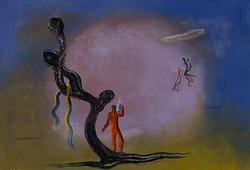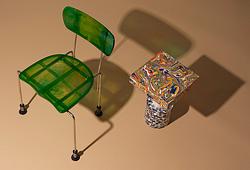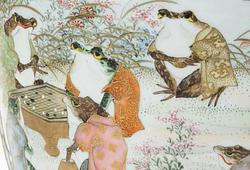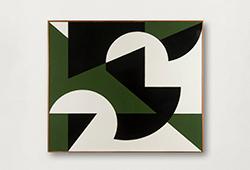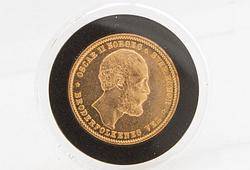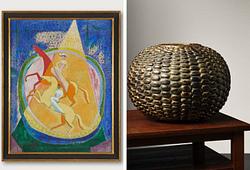Einar Jolin
"Dick de Pauws Orkester"
Signed Jolin and dated 1930. Canvas 89 x 116 cm.
Alkuperä - Provenienssi
Acquired directly from the artist's family.
Private collection.
Näyttelyt
Liljevalchs konsthall, Stockholm, "Einar Jolin", 1957, cat. no 59.
Kirjallisuus
Nils Palmgren, "Einar Jolin", 1947, mentioned p. 171.
Muut tiedot
Nils Palmgren writes about the period in Jolin's life referred to as "The Gray Period":
"The years following his return from Cassis in 1928 belong to Jolin's 'gray period,' which extends until the mid-1930s. The blond, flowing beauty has now definitively receded from his canvases – Jolin, too, is influenced by the cloud that hangs over the world during this time, the dark and heavy years of economic depression. He now cultivates shades and tones of gray almost with frenzy. However, he discovers new expressions and richness on the canvases, despite being painted by a color sybarite. [...] These paintings of the royal capital can perhaps also include the canvases with Royal Interiors from the early 1930s ('Dick de Pauw's Orkester,' 1930, 'Royal-afton,' 1930, 'Thé dansant, Royal,' 1931, 'Jack Harris' Orkester, Royal,' 1932, 'Thé dansant,' 1932, and 'Bal Fleuri' from the same year.) For these oil paintings, Jolin made several studies in pencil on-site and in watercolor in the studio. [...] As compositions, these Royal paintings are some of the most calculated and mathematically planned in Jolin's entire oeuvre. As colors, they represent a fulfillment of the painter's intentions during the gray period with a delicate portrayal of light, shining material treatment, and a peculiar saturation in the muted tones."
Dick de Pauw was a Belgian-born English jazz violinist and bandleader who was active in Sweden for much of the 1920s. He came to Sweden in 1924 with his own orchestra and began a long-standing engagement at the Grand Hotel in Stockholm on New Year's Eve 1924-1925, where they played at the tea dances in Vinterträdgården (Grand Hotel)
In the current painting, you can see elegantly dressed couples dancing happily and closely entwined to the music of de Pauw's orchestra. The painting is primarily in the gray scale as mentioned by Palmgren, except for one of the ladies' dresses, which captures the viewer's attention with its dark red color. Paintings with motifs from the Royal are rarely found at auctions.




